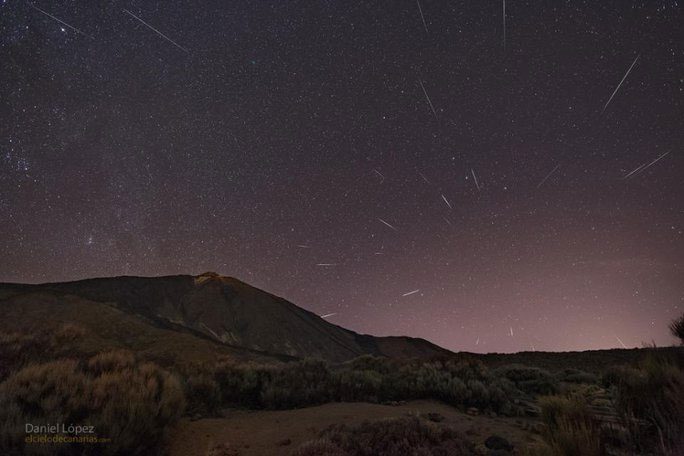The peak night of one of the most spectacular meteor showers of the year – the Quadrantids – will occur on the night of January 3rd, into the early hours of January 4th, as viewed from Vietnam, rising amidst the nearly full Wolf Moon.
According to Time and Date, the number of meteors that can be observed in Vietnam during the peak night may reach up to 110 meteors per hour, which is ten times more than several other meteor showers.
Countries in the Northern Hemisphere will be able to observe the meteor shower throughout the night, and it has already been visible at a less dense rate since December 28th. However, it will be more favorable to wait until after midnight, ideally starting from 2 AM onwards.
After the peak night, the meteor shower will gradually weaken and completely disappear after January 12th.

Quadrantids Meteor Shower – (Image: NASA).
The Quadrantids meteor shower originates from the asteroid 2003 EH1, an object that takes 5.5 years to orbit the Sun. However, each year our planet passes through its trail of dust and debris at the end of the old year and the beginning of the new year, creating the meteor shower.
Meteor showers are usually named after the constellation closest to their radiant point in the sky, but Quadrantids sound unfamiliar because the constellation named Quadrans Muralis has been a “lost world” for over 100 years. Specifically, this constellation was removed from the list of recognized constellations by the International Astronomical Union (IAU) in 1922.
Quadrantids are sometimes referred to as Bootids, named after the modern constellation Bootes. You can find its radiant point between the constellations Bootes, Draco, and Ursa Major.
For the best viewing experience, it’s recommended to allow your eyes to adjust to the darkness by avoiding bright lights and screens for about 15-20 minutes.
The biggest obstacle to observing this meteor shower is the Wolf Moon (the full moon in January), which will be nearly 90% full tonight, potentially obscuring some meteors. However, due to the dense nature of the Quadrantids, you will still have the opportunity to catch a glimpse of them.


















































